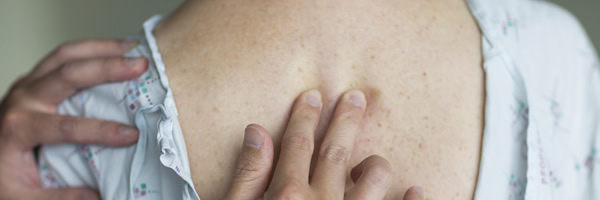Disc Degeneration

Disc degeneration, also called degenerative disc disease, is most commonly caused by age. Each spinal disc is like a jelly doughnut, with a soft center (nucleus) and tougher outer shell (capsule). The discs are between your vertebrae, or spinal bones, and support the bones and cushion movement.
With age, the capsule can become brittle or crack, and the nucleus can leak or bulge. As discs degenerate, disc tissue flattens and spreads sideways, sometimes causing back or neck pain. Disc tissue also can press on spinal nerves, causing pain or weakness. Severe disc degeneration disease can cause nerve damage. Other causes of disc degeneration include osteoarthritis and sudden injury, such as from falling or heavy lifting.
Disc degeneration cannot be stopped or reversed. Most people, however, can be treated for “discogenic” pain ─ the pain caused by disc changes ─ without surgery or disc replacement. The OHSU Spine Center is committed to trying the least-invasive options first.
Symptoms
- Pain in the center of your neck or back
- Pain that gets worse with sitting for a long time or leaning forward
- Pain that gets worse with vibration (such as riding in a car) or other types of movement
Diagnostic test
- Discography: This test uses a needle guided by a type of X-ray to identify the spinal disc causing pain.
Nonsurgical treatments
Mild or moderate symptoms can often be treated without surgery.
- Cognitive behavioral therapy
- Exercise: A program can help you stay active and control your pain.
- Medication: Doctors can prescribe medications to reduce pain.
- Physical therapy: A physical therapist can offer treatments and exercise programs to address symptoms.
Minimally invasive treatments
- Disc biacuplasty: Two small needles are placed into a damaged disc and heated to stop nerves from sending pain messages.
- Epidural steroid injections: Injections can treat pain caused by pressure on spinal nerves.
- Intradiscal electrothermal therapy: The doctor uses a needle and catheter to provide heat that relieves the pain caused by spinal disc degeneration or lower-back disc problems.
Surgical treatment
Surgery may be recommended if your disc degeneration is severe, if other treatments don’t work, or if severe pain and weakness limit your mobility.
- Artificial disc replacement: A damaged or diseased disc is replaced with a prosthetic one.